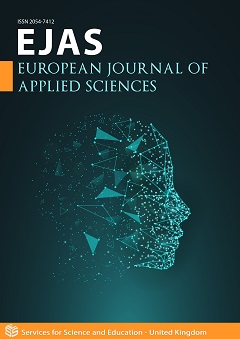Analyses of COVID-19 in Japan by the Mathematical Model of SIR
DOI:
https://doi.org/10.14738/aivp.103.12568Keywords:
Variants of SARS-COV-2, SIR model, Epidemiology, Molecular biology, Logistic theoryAbstract
The COVID-19 in Japan is analyzed by means of the SIR equation. Contents are listed up below as 1~12. In Sec. 4, the basic reproduction numbers for the 5 and 6 waves in Japan are determined as 2.5 and 5, respectively. Here we make use of data of the removed number, rather than that of the infective number, because the latter seems to be ambiguous. Other important contents are discussed about the stronger the infection power, the smaller the number of deaths in Sec5, an area theorem of infection curves for large basic reproduction number in Sec.9, introducions of vaccine effect and a rate of people with self-control into the SIR model in Sec.11, and finally a logistic formula for organic extinctions in Sec.12.
References
W. O. Kermack and A.G. McKendrick, A. G. (1927), ”A Contribution to the Mathematical Theory of Epidemics”, Proceedings of the Royal Society A115 (1927), 700-721(1927).
W. D. Murray, ”Epidemic models and the dynamics of infectious diseases”, Mathematical
Biology 42, 610-650 (1993).
H. Hethcote, ”The Mathematics of Infectious Diseases”, SIAM Review 42, 599-653「(2000).
M.J. Keeling and L. Danon, ”Mathematical modelling of infectious diseases ”, British
Medical Bulletin 92, 33-42 (2009).
S. Pathak, A. Maiti and G.P. Samanta, ”Rich dynamics of an SIR epidemic model”,
Nonlinear Analysis: Modelling and Control 15, 71-81 (2010).
T. Harko, F.S.N. Lobo, M.K. Mak, ”Exact analytical solutions of the SusceptibleInfected-Recovered (SIR) epidemic model and of the SIR model with equal death and
birth rates”, Applied Mathematics and Computation 236, 184194 (2014).
J.C. Miller, ”Mathematical models of SIR disease spread with combined non-sexual and
sexual transmission routes”, Infectious Disease Modelling 2, 3555 (2017).
R. Sameni, ”Mathematical Modeling of Epidemic Diseases; A Case Study of the COVID19 Coronavirus”, [arXiv:2003.11371 [q-bio.PE]](2017).
P-F. Verhulst, ”Notice sur la loi que la population poursuit dans son accroissement”,
Correspondance Mathmatique et Physique 10, 113-121 (1838).
T. Saito and K. Shigemoto, “A Logistic Curve in the SIR Model and Its Application to Deaths by COVID-19 in Japan”, medRxiv 10.1101/2020.06.25.20139865.
Paul A. Reiser, “Modified SIR Model Yielding a Logistic Solution”, arXiv:2006.01550[q-bio.PE].
T. Saito, “An Application of Logistic Formula to Deaths by COVID-19 in Japan”, medRxiv 10.1101/2020. 09.15.20195081.
A. Kokado and T. Saito, “A Logistic Formula and Its Application to Deaths by the Third Wave of COVID-19 in Japan”, medRxiv 10.1101/2021.01.30.21250827,
T. Saito, “Variants of SARS-COV-2 and the Death Toll”, Integ Mol Bio Biotechnol 1:001-003, 2021.
T. Saito, “Area Theorem of Infection Curves for Large Basic Reproduction Number”, European Journal of Applied Sciences 10(1), 482-486, 2022.
Data published from the Ministry of Health, Labor and Welfare of Japan.
See for example, ”Summary of the New Coronavirus Infection ”(in Japanese),
https://hazard.yahoo.co.jp/article/20200207; ”Status of the Domestic New Coronavirus
Infection”(in Japanese), https://toyokeizai.net/sp/visual/tko/covid19/.
J. B. Calhoun, “Death Squared: The Explosive Growth and Demise of a Mouse Population”, Proc. R. Soc. Med. 66(1 Pt2): 80-88.
Downloads
Published
How to Cite
Issue
Section
License
Copyright (c) 2022 Takesi Saito

This work is licensed under a Creative Commons Attribution 4.0 International License.






